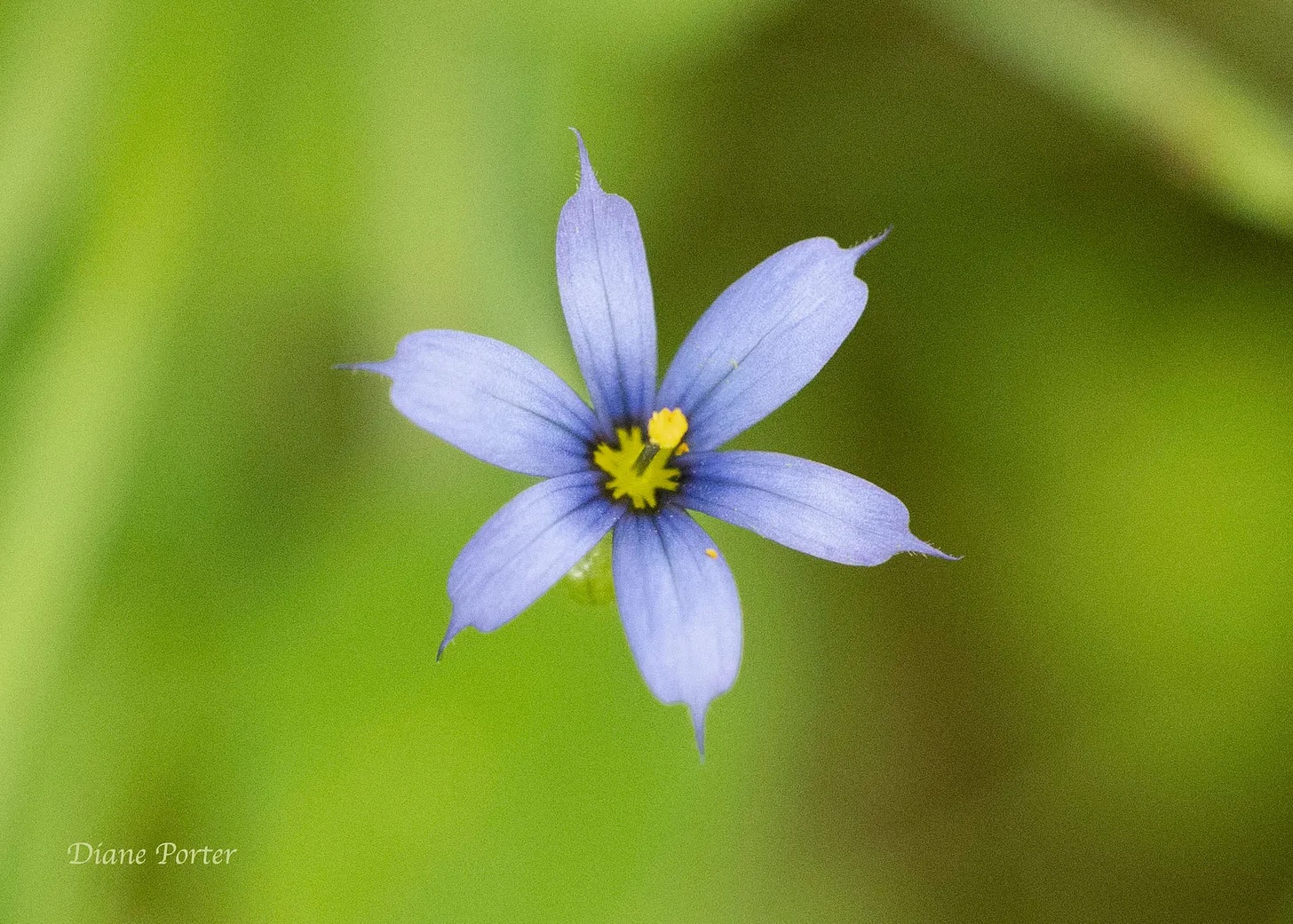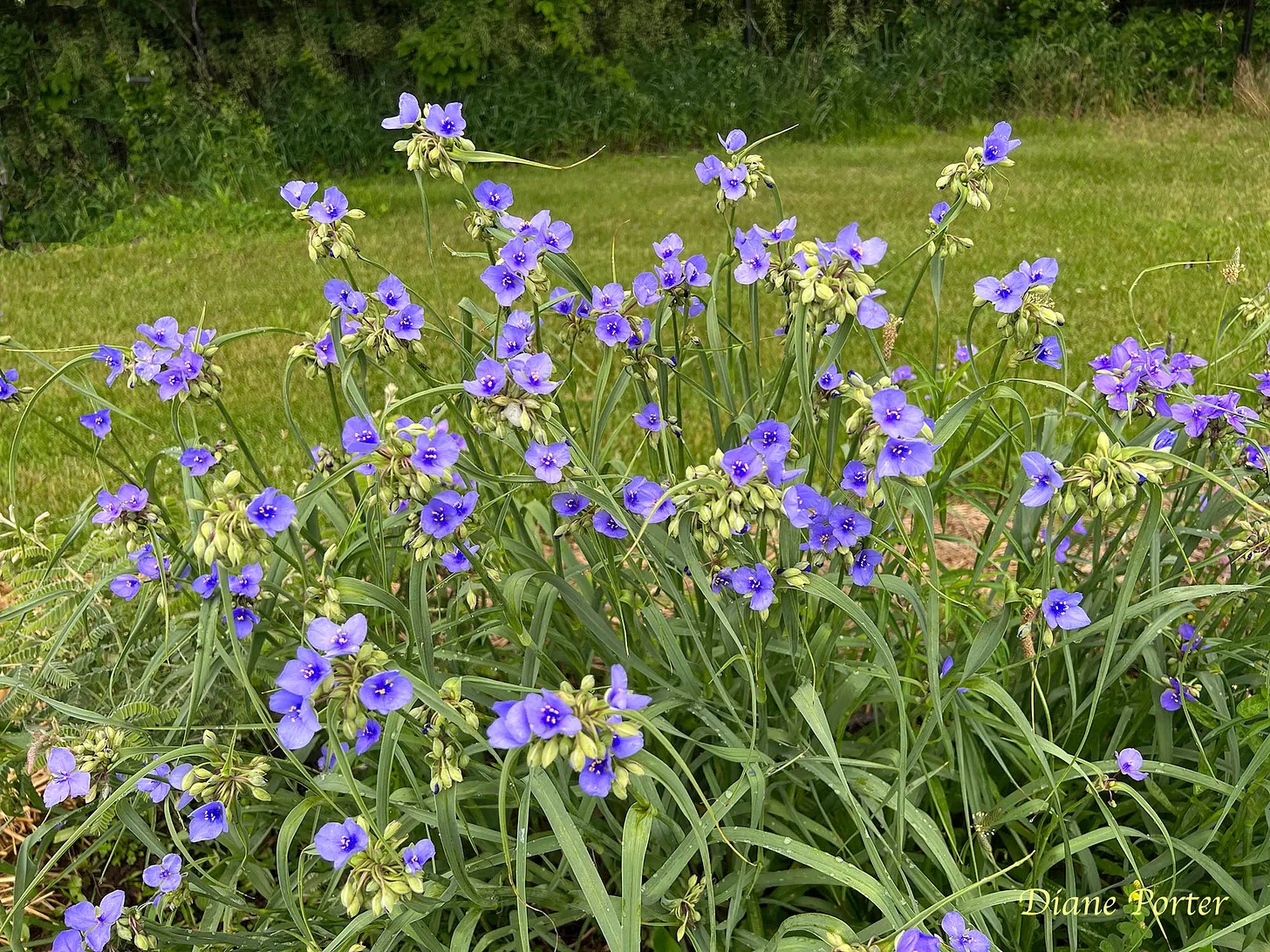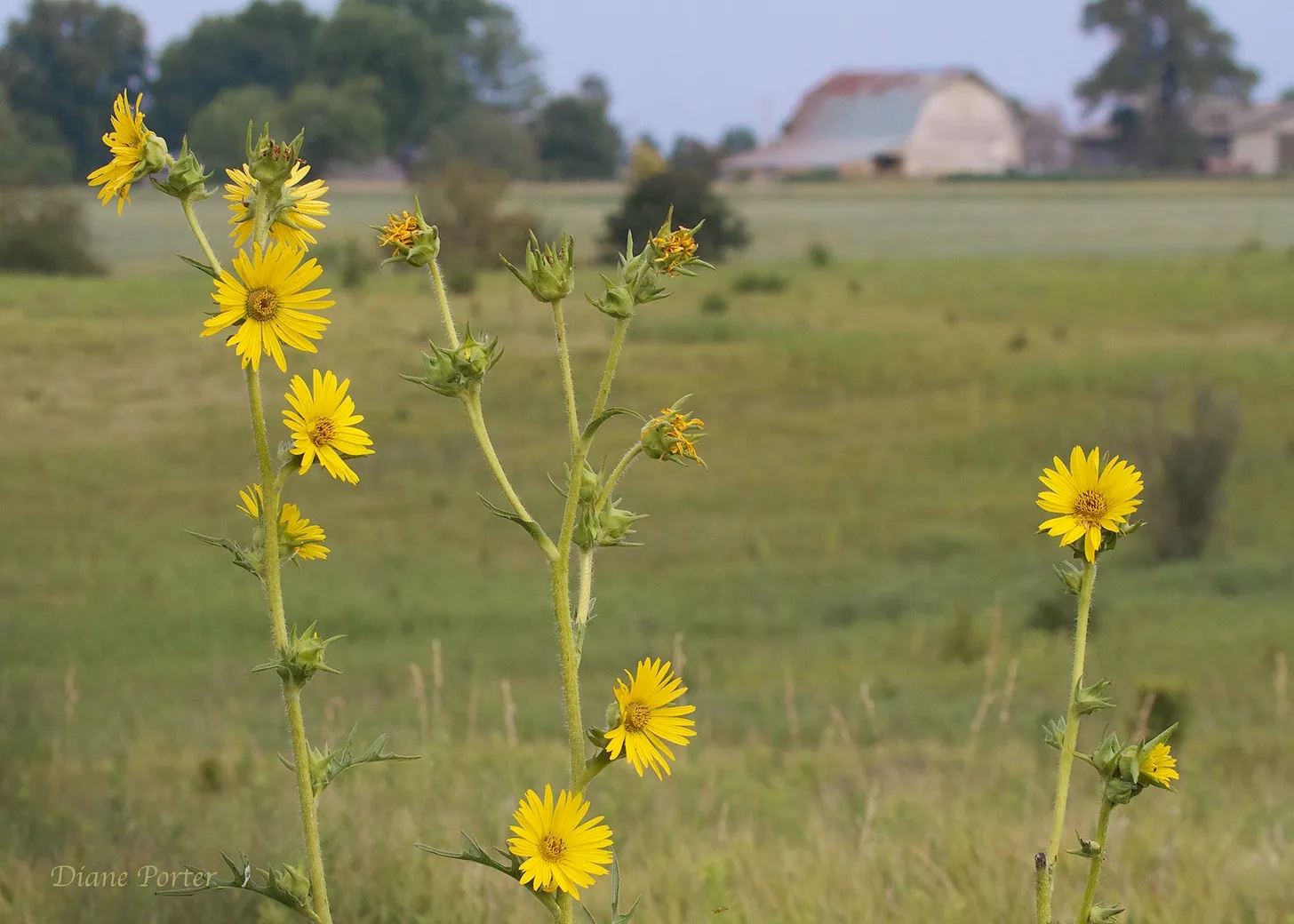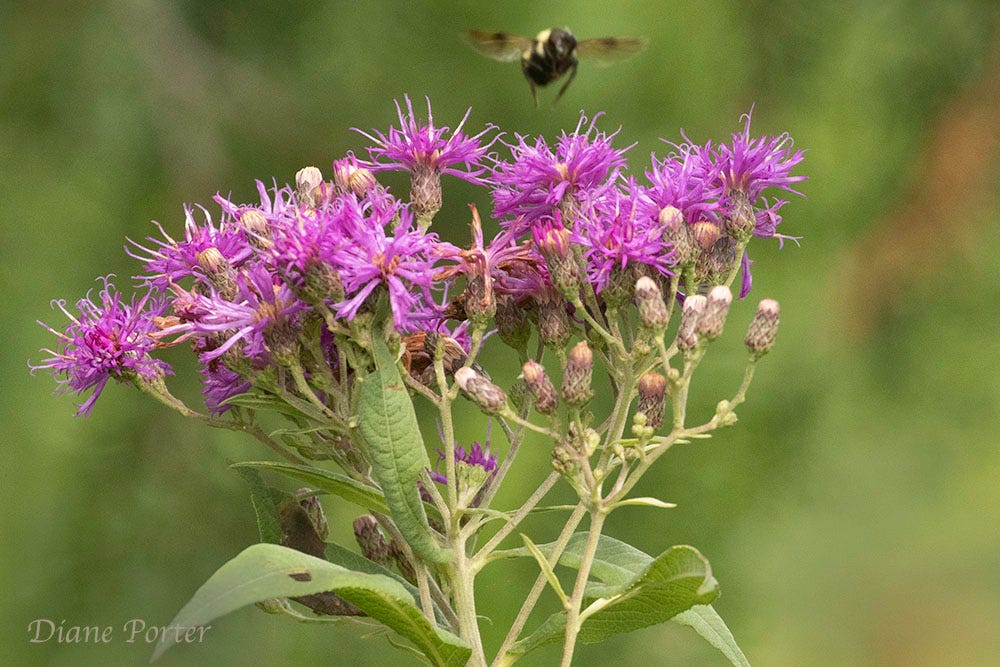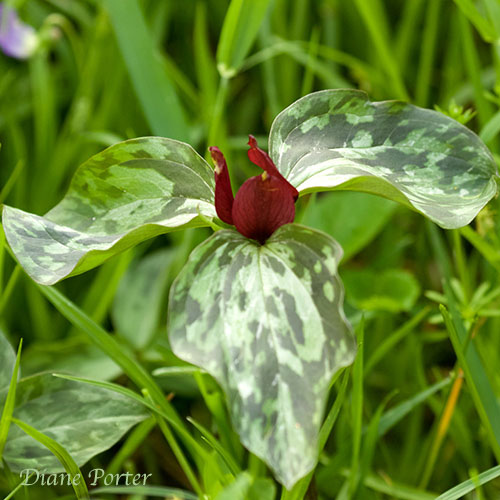Diane Porter of Fairfield first published this post on My Gaia, an email newsletter “about getting to know nature” and “giving her a helping hand in our own backyards.” Diane also maintains the Birdwatching Dot Com website and bird blog.
Ohio Spiderworts (Tradescantia ohiensis) wake me up when I look out the window. Although only a few flowers are open at a time, the bright golden anthers play against their color-opposite purple petals. My eyes shimmer.
It’s a morning-only vision. Around noon the flowers close up tight. As if to say, “Come back tomorrow.” For the rest of the day, spiderworts are simply green, easy to overlook.
But next sunrise, a fresh crop of purple-petaled blossoms opens. From the center of each flower, slender columns reach up. These are the reproductive parts of the flowers.
Continue Reading...

